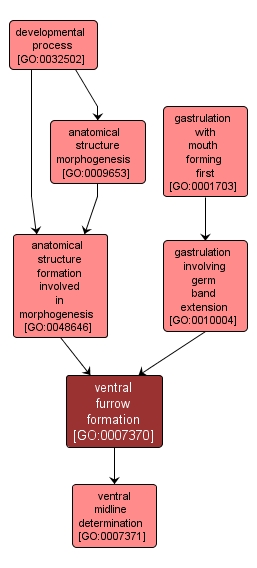GO TERM SUMMARY
|
| Name: |
ventral furrow formation |
| Acc: |
GO:0007370 |
| Aspect: |
Biological Process |
| Desc: |
Formation of a ventral indentation (furrow) from the blastoderm epithelium, which is internalized to form a tube in the interior of the embryo, marking the start of gastrulation. |
|

|
INTERACTIVE GO GRAPH
|














